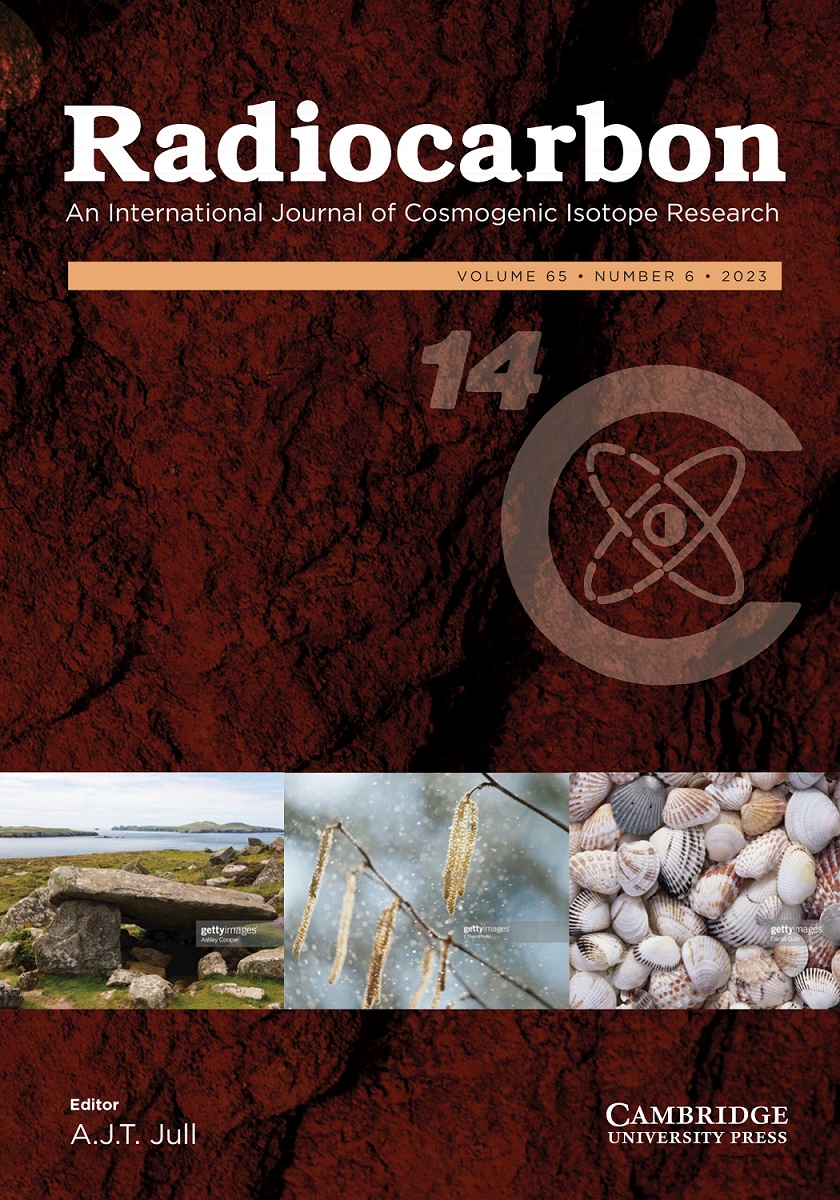Radiocarbon dating of lipids preserved in pottery vessels: guidelines for best-practice in compound-specific 14C analyses
IF 1.3
3区 地球科学
Q2 GEOCHEMISTRY & GEOPHYSICS
引用次数: 0
Abstract
Pottery vessels played a central role in the processing, storage and transport of animal and plant products by prehistoric and historic peoples with their chemical residues surviving for thousands of years. Accurate radiocarbon dating of archaeological pottery vessels by isolating reliable sources of carbon relating to the use of pots has long been a major challenge, but is now possible using compound-specific radiocarbon analysis of absorbed organic residues preserved in the ceramic fabric of the vessel wall. This method involves the radiocarbon dating of single fatty acids most commonly derived from degraded animal fats. These compounds are extracted from the ceramic matrix and isolated from potentially interfering compounds using preparative capillary gas chromatography. When coupled with lipid biomarker and compound-specific stable carbon isotope analyses, this method enables the palaeodietary and chronological information contained in archaeological lipids preserved in ceramic vessels to be interpreted together. From a practical perspective the methodology is challenging and for successful application must adhere to rigorous protocols. We present here guidelines which include (i) consideration of pottery selection, (ii) technical parameters for the isolation of fatty acids then their陶器中保存的脂质的放射性碳年代测定:特定化合物 14C 分析最佳实践指南
陶器在史前和历史时期人们加工、储存和运输动植物产品的过程中发挥了核心作用,其化学残留物可存留数千年。长期以来,通过分离与陶器使用有关的可靠碳源来对考古陶器进行精确的放射性碳测年一直是一项重大挑战,但现在可以通过对器皿壁陶瓷结构中保存的吸收有机残留物进行特定化合物放射性碳分析来实现。这种方法涉及对最常见的来自降解动物脂肪的单一脂肪酸进行放射性碳测年。使用制备型毛细管气相色谱法从陶瓷基质中提取这些化合物,并与潜在的干扰化合物分离。这种方法与脂质生物标志物和特定化合物的稳定碳同位素分析相结合,可以对保存在陶器中的考古脂质所包含的古饮食和年代信息进行综合解释。从实践角度看,该方法具有挑战性,要想成功应用,必须遵守严格的规程。我们在此提出的指导原则包括:(i) 考虑陶器的选择;(ii) 分离脂肪酸的技术参数及其 14C 测定和校准;(iii) 选定案例研究,以说明该方法的最佳应用。
本文章由计算机程序翻译,如有差异,请以英文原文为准。
求助全文
约1分钟内获得全文
求助全文
来源期刊

Radiocarbon
地学-地球化学与地球物理
CiteScore
16.20
自引率
6.00%
发文量
85
审稿时长
6-12 weeks
期刊介绍:
Radiocarbon serves as the leading international journal for technical and interpretive articles, date lists, and advancements in 14C and other radioisotopes relevant to archaeological, geophysical, oceanographic, and related dating methods. Established in 1959, it has published numerous seminal works and hosts the triennial International Radiocarbon Conference proceedings. The journal also features occasional special issues. Submissions encompass regular articles such as research reports, technical descriptions, and date lists, along with comments, letters to the editor, book reviews, and laboratory lists.
 求助内容:
求助内容: 应助结果提醒方式:
应助结果提醒方式:


